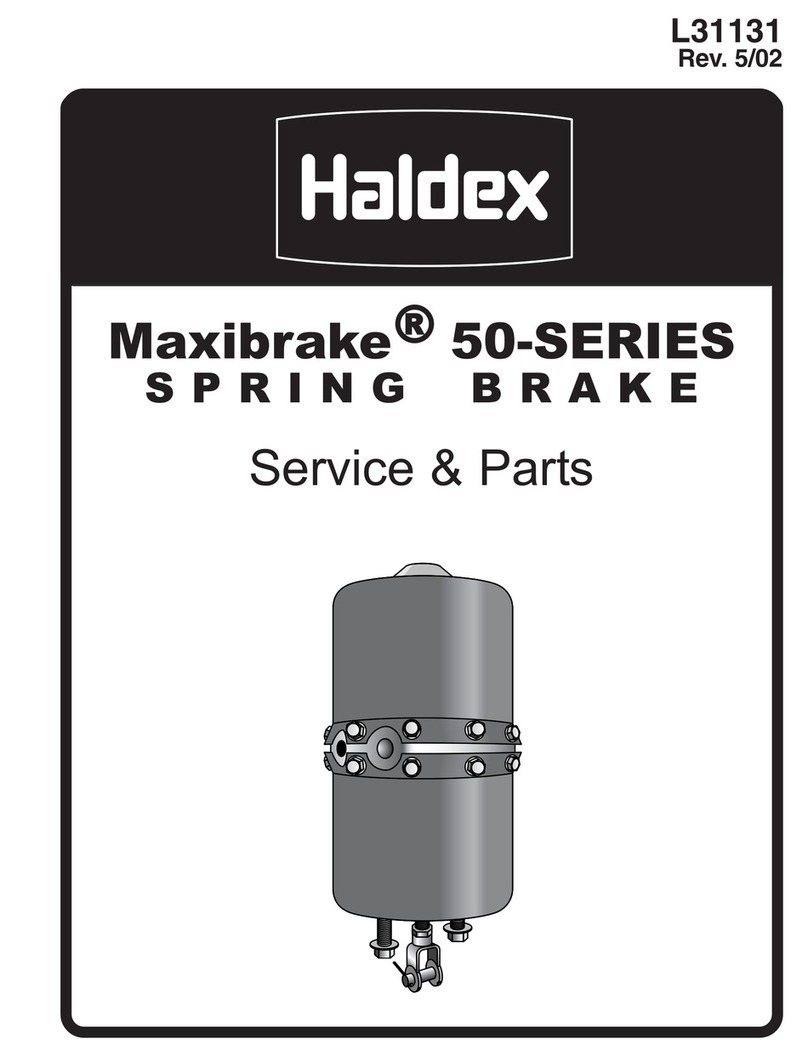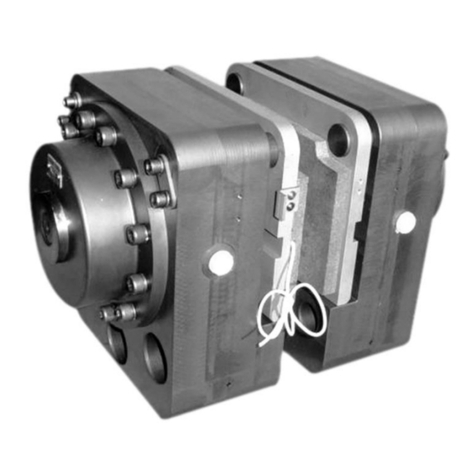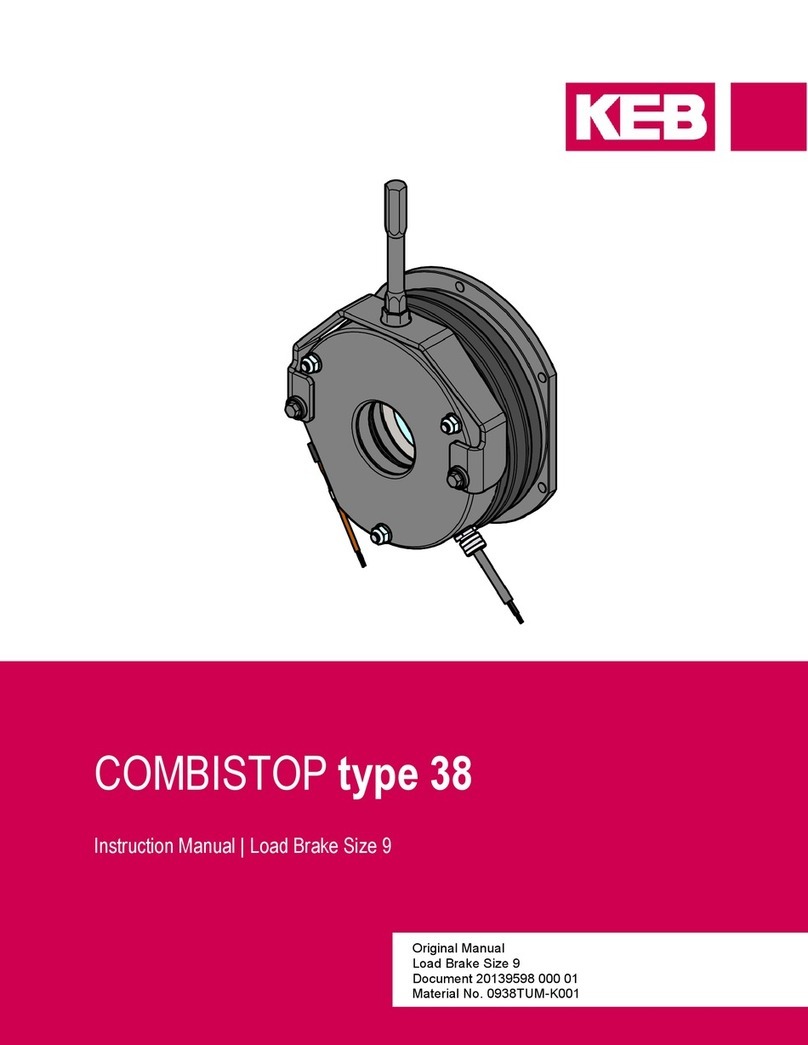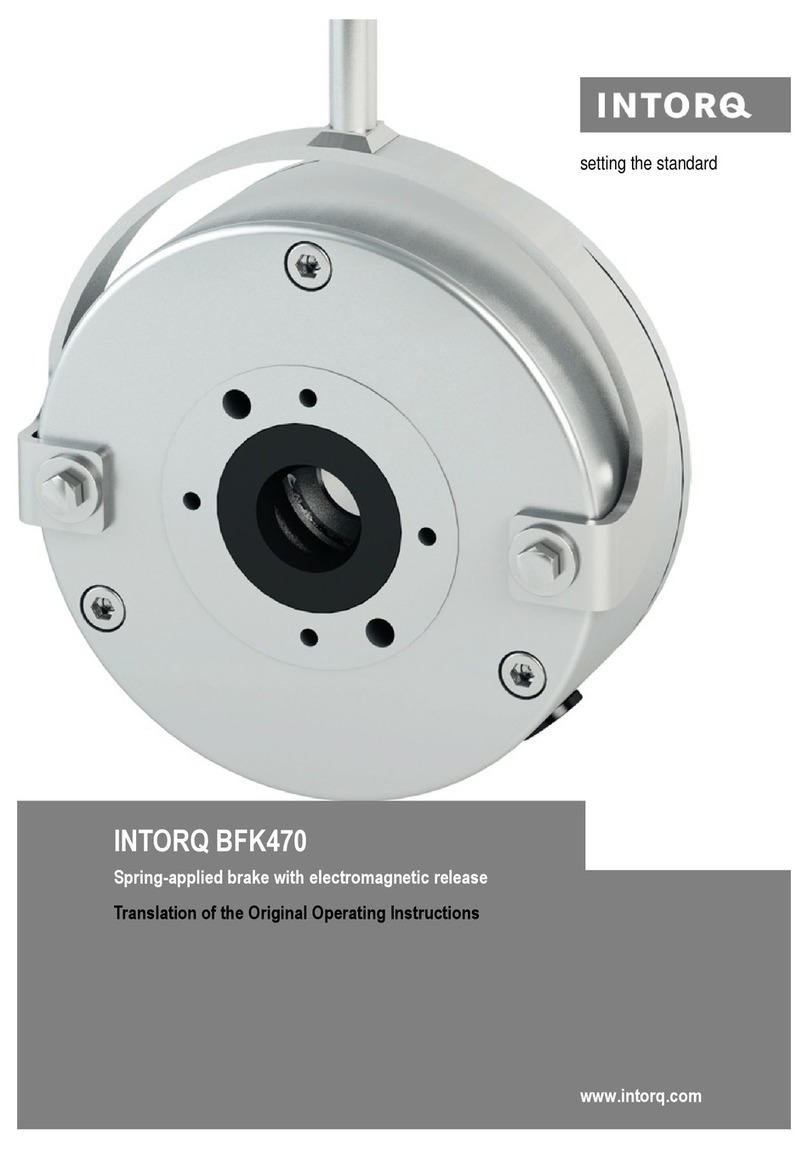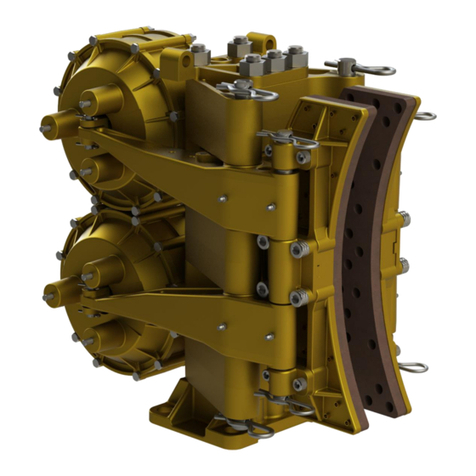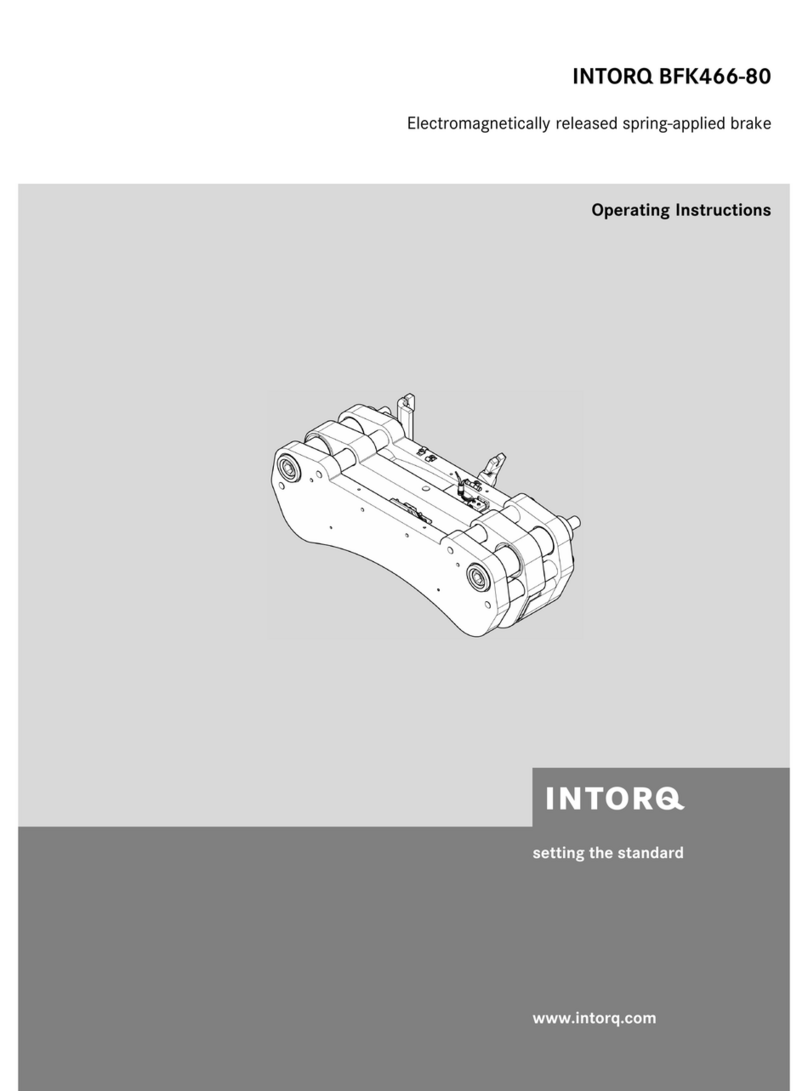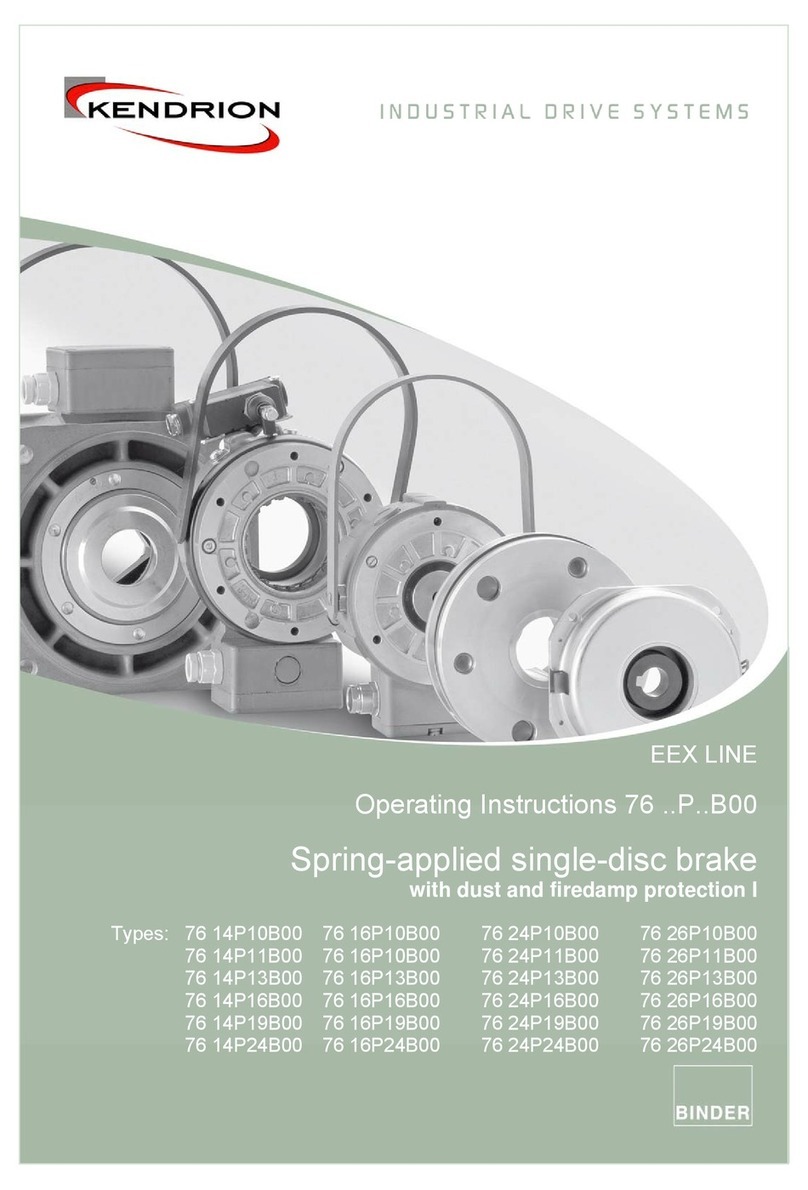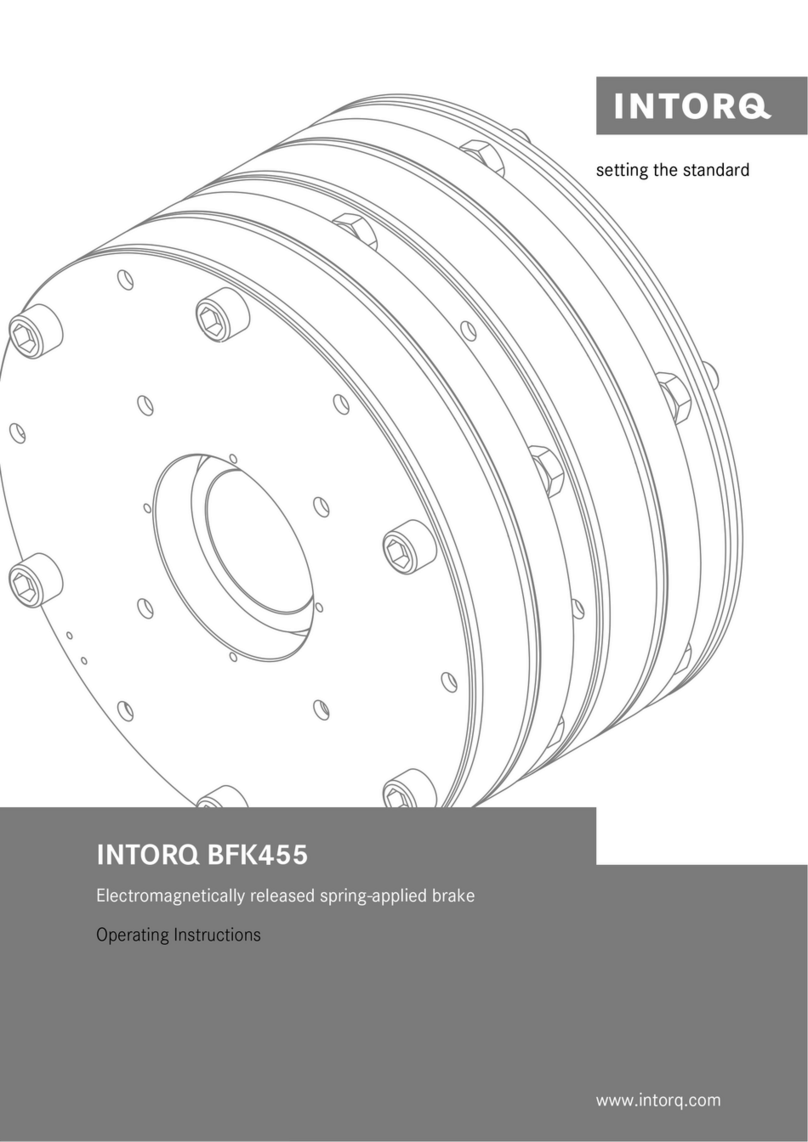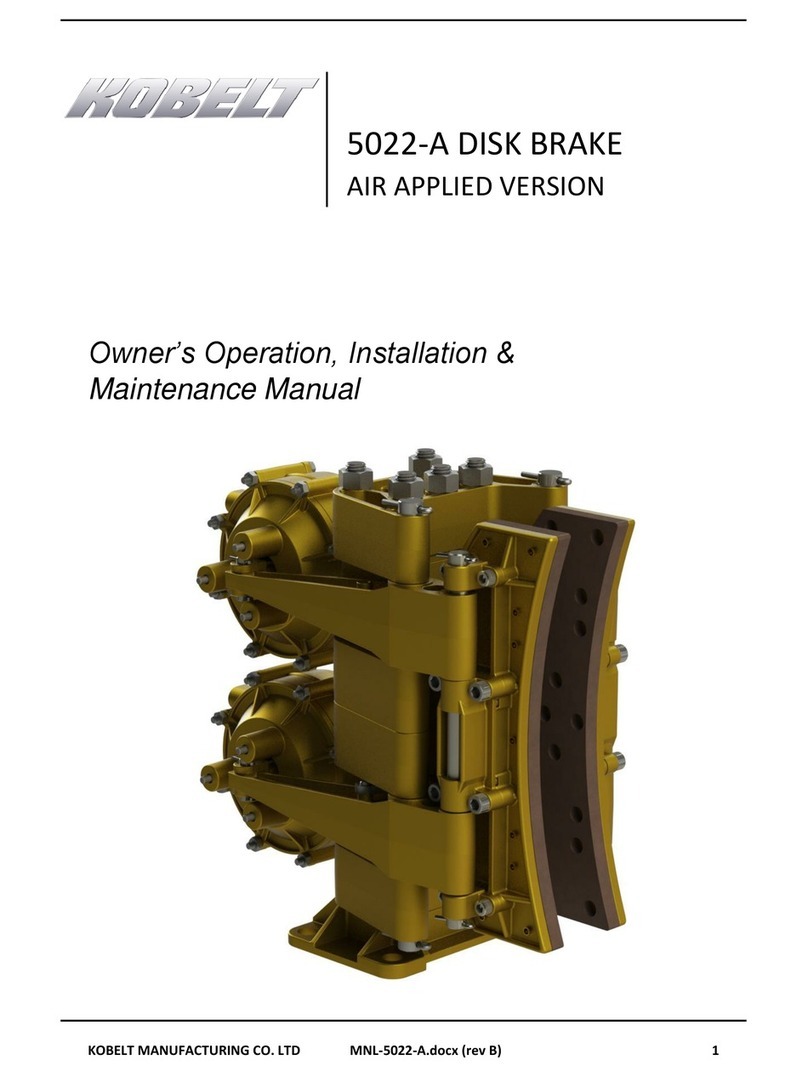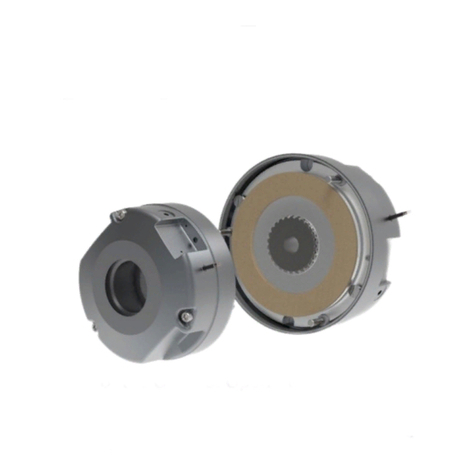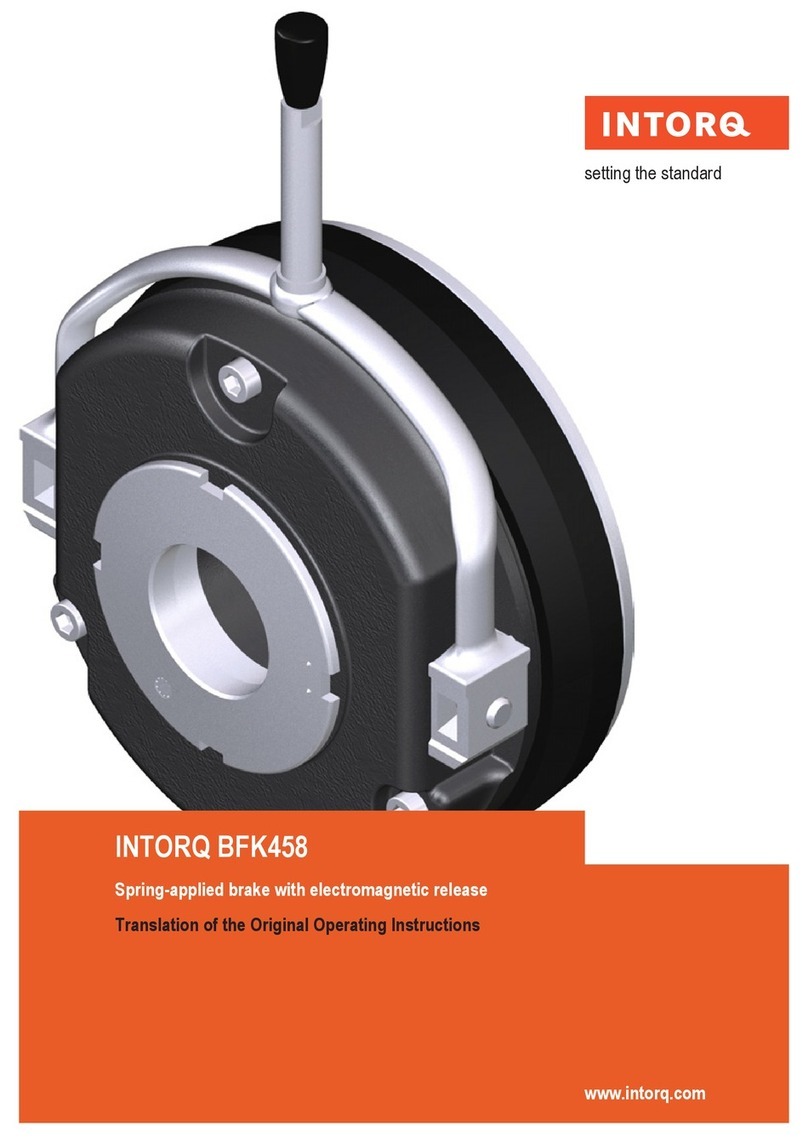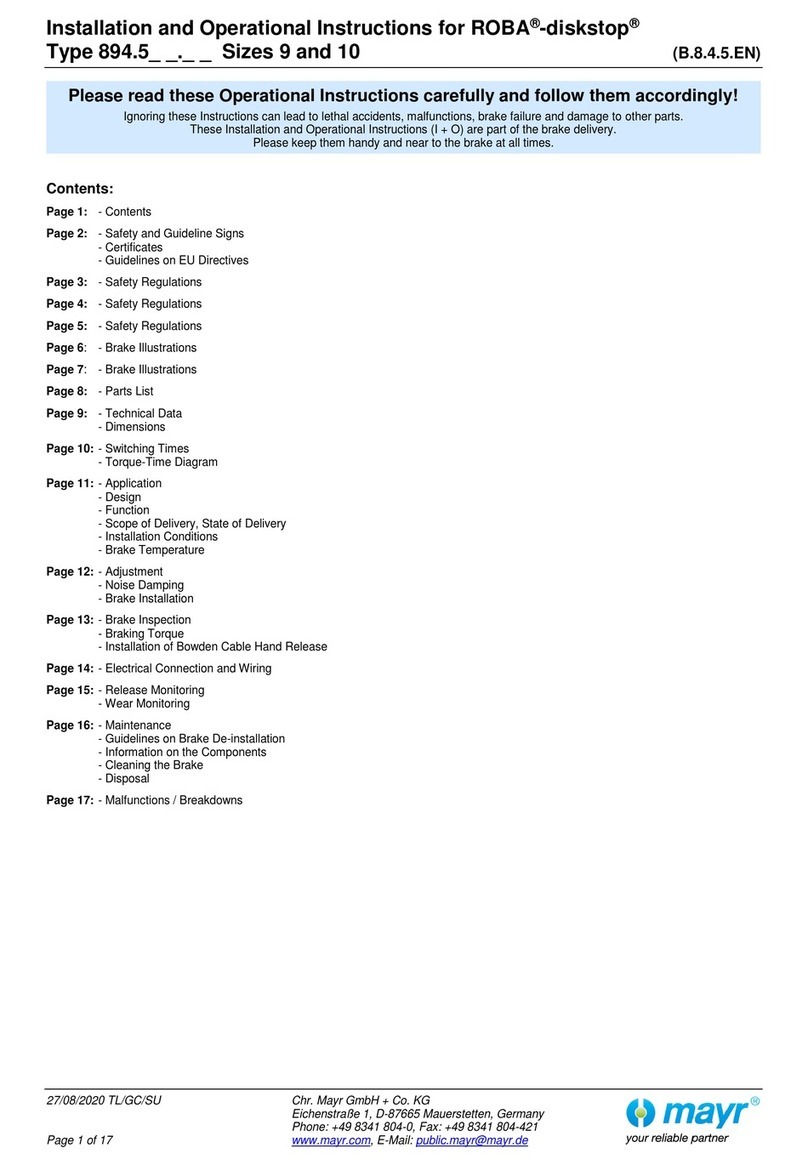motor C-face. Securely tighten both set
screws to 156 in-lbs on 5/16” and 290 in-lbs
on 3/8”.
Note 3: On most applications, particularly in
vertical position, a set screw dimple drilled into
shaft is recommended.
B. Remove housing bolts (15), lock washers
(15W) and housing (7).
C. Depress solenoid plunger (29) and tie
plunger to frame (79).
D. Remove entire support plate assembly (142)
by evenly unscrewing screws (142S).
Remove screws, conical spring washers
(142W), and flat washers (142X).
E. Remove pressure plate (5), friction disc (4)
and stationary disc (3).
Note 4: Brakes with a single friction disc do
not have stationary discs. Vertically mounted
brakes will have special pins which hold spacer
springs and, in some cases, spring washers
(except one disc vertical below). Note color
coded sequence of springs and location of
washers, if used, or refer to Sheet 301.3 for
proper assembly of vertical mounting
components.
F. Attach endplate (2) to NEMA C-face of motor
using four 1/2-13 socket head cap screws
and medium spring lock washers (not
supplied) torque per manufacturer’s
specifications. (Head of cap screws must not
project above friction surface.)
Note 5: If motor, with or without reducer, is to
be ceiling mounted after assembly, entire brake
will have to be rotated 180° or “upside down”
so it will be positioned with solenoid plunger
(29) above frame when final assembly is
mounted on ceiling. Similarly, for horizontal wall
mounting, rotate 90°.
G. Reassemble friction discs (be sure friction
discs slide freely, file I.D. if necessary),
springs (if vertical), stationary discs, and
pressure plate in correct sequence and
position. All parts must slide freely. The
universal mounting pressure plate presently
used has three tapered reliefs on outboard
face. However, some older brakes used a
pressure plate with a single tapered relief
marked
top
, which must be installed with
relief in area of sector gear (31).
H. Mount support plate assembly, torque
screws to 50 in-lbs in endplate. Conical
spring washer installed under the screw
head. Flat washer used under the conical
spring washer only with aluminum support
plate. Be sure that assembly is mounted
with the solenoid in a vertical position
(plunger above frame) as shown when
brake is horizontal. If plunger is not tied
down and has allowed the mechanism to
overadjust, it will have to be reset before
mounting support plate. In this case the
lever arm (17) throat will be near, or
touching, the pinion (32) teeth. Refer to
Figure 6 and
Self-Adjust Maintenance
.
Loosen pressure spring cap screw (19) until
pressure spring (11) is free, mount support
plate assembly to endplate, and retighten
spring cap screw until snug. Do not
overtighten! Torque to a maximum of
100 in-lbs.
I. Remove plunger tie-down. Manually lift
solenoid plunger to maximum travel and
release. Complete electrical connections,
(See Section on
Electrical Connection of
Brake
.) Depress solenoid plunger manually
or electrically, and allow it to snap up.
Repeat this process several times to set air
gap on solenoid. (Check
Self-Adjust
Maintenance
Section for proper gap
measurement, or corrective action for
improper gap.)
J. See Section on
Electrical Connection of
Brake
, Note 2.
K. Assemble housing and shaft assembly,
rotating shaft (35) to engage key (35K) into
hub keyway. Be sure housing is assembled
with manual release on right hand (solenoid)
side (looking at output shaft side) or release
lever (148) will not latch. Replace housing
bolts and tighten evenly to 118 lb-ft of
torque.
L. For reducer application, mount and secure
brake/motor combination to mounting face
of reducer.
For alignment when brake shaft is direct-
connected to another shaft by a coupling
refer to coupling manufacturer’s suggested
procedure. Side or overhung load is not
permitted. Consult factory for reversing
applications.
II. Electrical Connection of Brake
CAUTION 1: Inverter Motor and Special
Control Systems. This brake contains either a
single phase AC coil or DC coil that requires
instantaneous power within ± 10% of rating at
the coil. A separate power source is required
when this brake is used in conjunction with a
motor or control system that limits voltage or
current input (i.e. inverter motors) or causes a
ramping of the power supply.
CAUTION 2: Class H coils with terminals. Do
not bend lead wire crimp connection as this
causes a fatigue in the metal which may break
under vibration.
Note 1: Brake coil connections described here
cover common motor connections. For
nonstandard motors or control connections,
contact respective supplier or Stearns Division.
Note 2: Be sure lead wires to coil are not tight
or pinched, and that leads will not be rubbed
by friction disc, trapped between solenoid
plunger and frame, caught between lever arm
and endplate, or by linkage.
Note 3: On brakes with space heater, connect
to appropriate power source. Heater is to be
energized continuously, including storage
periods, if rust may occur.
A. AC coils, single voltage
1. Dual voltage coils may be factory
preconnected for high voltage unless
otherwise specified on brake purchase
order. Checking coil connection is
suggested.
2. On single voltage coils, connect coil to any
two leads on single or three-phase motors
of the same voltage as the brake. Refer to
brake nameplate and coil number for correct
voltage and frequency. See Figure 2 for dual
voltage coil connection and connect to any
two leads of single or three-phase motor of
the same voltage. The brake can also be
wired to external switch contacts providing
proper voltage other than that used to
control the motor. Normally, the motor and
brake contacts are interlocked.
B. Connecting AC solenoid coils on dual
voltage 230/460 three-phase motors
To use a 230 volt coil (or a 230/460 dual
voltage coil connected for 230 volts) with a
230/460 dual voltage three-phase motor, the
brake leads are connected across two motor
terminals as shown, or other equivalent
combinations. If a 230 volt brake coil is
connected as shown in Figures 3 and 4 the
motor can be operated on either 230 volts or
460 volts with no effect on brake operation.
C. DC coils - all models
1. All Stearns DC coils are single voltage dual
winding. A high current pull-in winding is
initially energized to start the plunger
movement, while a low current holding
winding is momentarily shunted from the
circuit until the plunger has pulled in. The
older design incorporated a mechanical
switch mounted to the solenoid frame and
actuated by an arm mounted to the plunger
to bring the holding winding into the circuit.
In addition, coils over 48 Vdc have an arc
suppression module in parallel with the
switch contacts to protect the contacts from
arc erosion and suppress EMI. The polarity
of the incoming power supply is immaterial
with the mechanical switch. The new
electronic switch design incorporates an
electronic timing circuit to allow the plunger
to pull in, then electrically switch to the
holding winding. Polarity of the power supply
to the electronic switch and coil must be
maintained. Refer to Figure 5 for proper
wiring.
Caution! Never use a series resistor to
drop power supply voltage to the coil as
brake malfunction will result.
2. Due to high initial current demands of a DC
solenoid, a separate DC power source of
adequate current capacity is usually
required.
Caution! For electrical release of brake,
apply full rated coil voltage instantly. Do not
increase voltage slowly.
AC Voltage Coil Connection
Figure 2
3 and 421High voltage –2 and 41 and 3Low voltage Tie Leads
Power Line BPower Line A
For
Class B Coil (black)Class H Coil (colored)
Figure 3 Figure 4

